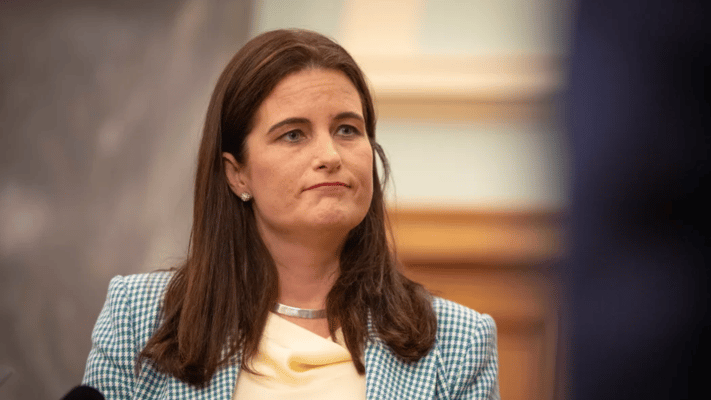Willis Walks The Talk – But It’s On A Tightrope

In a climate of continuing economic turbulence, New Zealand’s Budget 2024, presented by
Finance Minister Nicola Willis, reflects a balancing act of competing priorities and promises.
As the coalition government’s inaugural budget, it attempts to address the immediate
economic challenges while trying to stay true to its election pledges.
The backdrop of this budget is a tapestry of fiscal stressors: the lingering impacts of the
Covid-19 pandemic, the burdens of previous governmental borrowings, a persistent cost of
living crisis, and high interest rates. In this context, delivering on the promise of tax cuts was
a bold, if controversial, move.
The highlight of Budget 2024 is the introduction of tax relief, offering an average Kiwi $102
every fortnight in tax savings. This move aims to ease the financial pressure on households.
However, given the government’s current deficit and economic constraints this may
exacerbate fiscal challenges in the long run, especially by failing to rein in inflation at best or
at worst, end up exacerbating it. The government insists that it will fund the cuts from
savings, which remains to be seen. Yet, it is borrowing $12 billion, attracting savage criticism
from the Opposition. It seems as though the government was fully committed to delivering
its election promise of tax cuts as a crucial relief for struggling families.
Healthcare, education, and crime prevention have seen increased allocations, reflecting the
government’s focus on essential public services, and dispelling the growing perception in
recent weeks that it was intent on cutting essential services to save money. Healthcare
funding includes significant boosts for hospital infrastructure and mental health services. In
education, the government has prioritised early childhood education and additional
resources for schools, aiming to improve outcomes and accessibility across the board. The
increased budget for crime prevention underscores a commitment to enhancing public
safety amid heightened concerns by adding 500 new police staff.
Despite these positive steps, the budget lacks a long-term vision, particularly in addressing
New Zealand’s significant infrastructure deficit, estimated at $100 billion. The allocation of
only $7 billion for infrastructure development is insufficient to address the critical needs of
the country’s aging and inadequate infrastructure. Infrastructure development is crucial not
just for immediate job creation and economic stimulus, but also for long-term productivity
and growth, which New Zealand finds itself at the bottom of the OECD pecking order. The
minimal investment in this area could hinder future economic prospects and affect the very
public services the budget aims to bolster.
A notable aspect of this budget is its approach to reducing new spending by finding savings
within existing operational budgets. The government has identified $7.4 billion in savings by
cutting or reducing funding for various programmes, including free early childhood
education for two-year-olds and the Climate Emergency Response Fund. This strategy of
reallocation rather than new spending is an attempt to curb the fiscal deficit and
demonstrate fiscal responsibility. However, it risks undermining vital initiatives and may not
fully address the underlying economic issues.
The economic forecasts accompanying the budget paint a sobering picture. Economic
growth is expected to average just 1.5 per cent over the next two years, with high interest
rates continuing to suppress household and business spending. The unemployment rate is
projected to rise, peaking at 5.2 per cent by early 2025, which will further strain public
finances and social services.
Net migration, higher than expected, has partially alleviated labour shortages but also
contributed to domestic inflation and higher house prices, complicating the economic
landscape further. The government’s goal of returning to a budget surplus by 2027 remains
a daunting challenge, especially with the smaller-than-expected surplus forecasts and the
high costs of servicing debt.
Budget 2024 represents an attempt to walk a fine line between immediate relief and long-
term fiscal responsibility. The government has tried to ‘walk the talk’ by adhering to its
promise of tax cuts and focusing on healthcare, education, and public safety. However, it
risks stumbling by not adequately addressing long-term infrastructure needs and relying
heavily on reallocation rather than new investment. The success of this budget will depend
on its implementation and the government’s ability to adapt to the evolving economic
conditions.
In a climate of continuing economic turbulence, New Zealand’s Budget 2024, presented byFinance Minister Nicola Willis, reflects a balancing act of competing priorities and promises.As the coalition government’s inaugural budget, it attempts to address the immediateeconomic challenges while trying...
In a climate of continuing economic turbulence, New Zealand’s Budget 2024, presented by
Finance Minister Nicola Willis, reflects a balancing act of competing priorities and promises.
As the coalition government’s inaugural budget, it attempts to address the immediate
economic challenges while trying to stay true to its election pledges.
The backdrop of this budget is a tapestry of fiscal stressors: the lingering impacts of the
Covid-19 pandemic, the burdens of previous governmental borrowings, a persistent cost of
living crisis, and high interest rates. In this context, delivering on the promise of tax cuts was
a bold, if controversial, move.
The highlight of Budget 2024 is the introduction of tax relief, offering an average Kiwi $102
every fortnight in tax savings. This move aims to ease the financial pressure on households.
However, given the government’s current deficit and economic constraints this may
exacerbate fiscal challenges in the long run, especially by failing to rein in inflation at best or
at worst, end up exacerbating it. The government insists that it will fund the cuts from
savings, which remains to be seen. Yet, it is borrowing $12 billion, attracting savage criticism
from the Opposition. It seems as though the government was fully committed to delivering
its election promise of tax cuts as a crucial relief for struggling families.
Healthcare, education, and crime prevention have seen increased allocations, reflecting the
government’s focus on essential public services, and dispelling the growing perception in
recent weeks that it was intent on cutting essential services to save money. Healthcare
funding includes significant boosts for hospital infrastructure and mental health services. In
education, the government has prioritised early childhood education and additional
resources for schools, aiming to improve outcomes and accessibility across the board. The
increased budget for crime prevention underscores a commitment to enhancing public
safety amid heightened concerns by adding 500 new police staff.
Despite these positive steps, the budget lacks a long-term vision, particularly in addressing
New Zealand’s significant infrastructure deficit, estimated at $100 billion. The allocation of
only $7 billion for infrastructure development is insufficient to address the critical needs of
the country’s aging and inadequate infrastructure. Infrastructure development is crucial not
just for immediate job creation and economic stimulus, but also for long-term productivity
and growth, which New Zealand finds itself at the bottom of the OECD pecking order. The
minimal investment in this area could hinder future economic prospects and affect the very
public services the budget aims to bolster.
A notable aspect of this budget is its approach to reducing new spending by finding savings
within existing operational budgets. The government has identified $7.4 billion in savings by
cutting or reducing funding for various programmes, including free early childhood
education for two-year-olds and the Climate Emergency Response Fund. This strategy of
reallocation rather than new spending is an attempt to curb the fiscal deficit and
demonstrate fiscal responsibility. However, it risks undermining vital initiatives and may not
fully address the underlying economic issues.
The economic forecasts accompanying the budget paint a sobering picture. Economic
growth is expected to average just 1.5 per cent over the next two years, with high interest
rates continuing to suppress household and business spending. The unemployment rate is
projected to rise, peaking at 5.2 per cent by early 2025, which will further strain public
finances and social services.
Net migration, higher than expected, has partially alleviated labour shortages but also
contributed to domestic inflation and higher house prices, complicating the economic
landscape further. The government’s goal of returning to a budget surplus by 2027 remains
a daunting challenge, especially with the smaller-than-expected surplus forecasts and the
high costs of servicing debt.
Budget 2024 represents an attempt to walk a fine line between immediate relief and long-
term fiscal responsibility. The government has tried to ‘walk the talk’ by adhering to its
promise of tax cuts and focusing on healthcare, education, and public safety. However, it
risks stumbling by not adequately addressing long-term infrastructure needs and relying
heavily on reallocation rather than new investment. The success of this budget will depend
on its implementation and the government’s ability to adapt to the evolving economic
conditions.










Leave a Comment